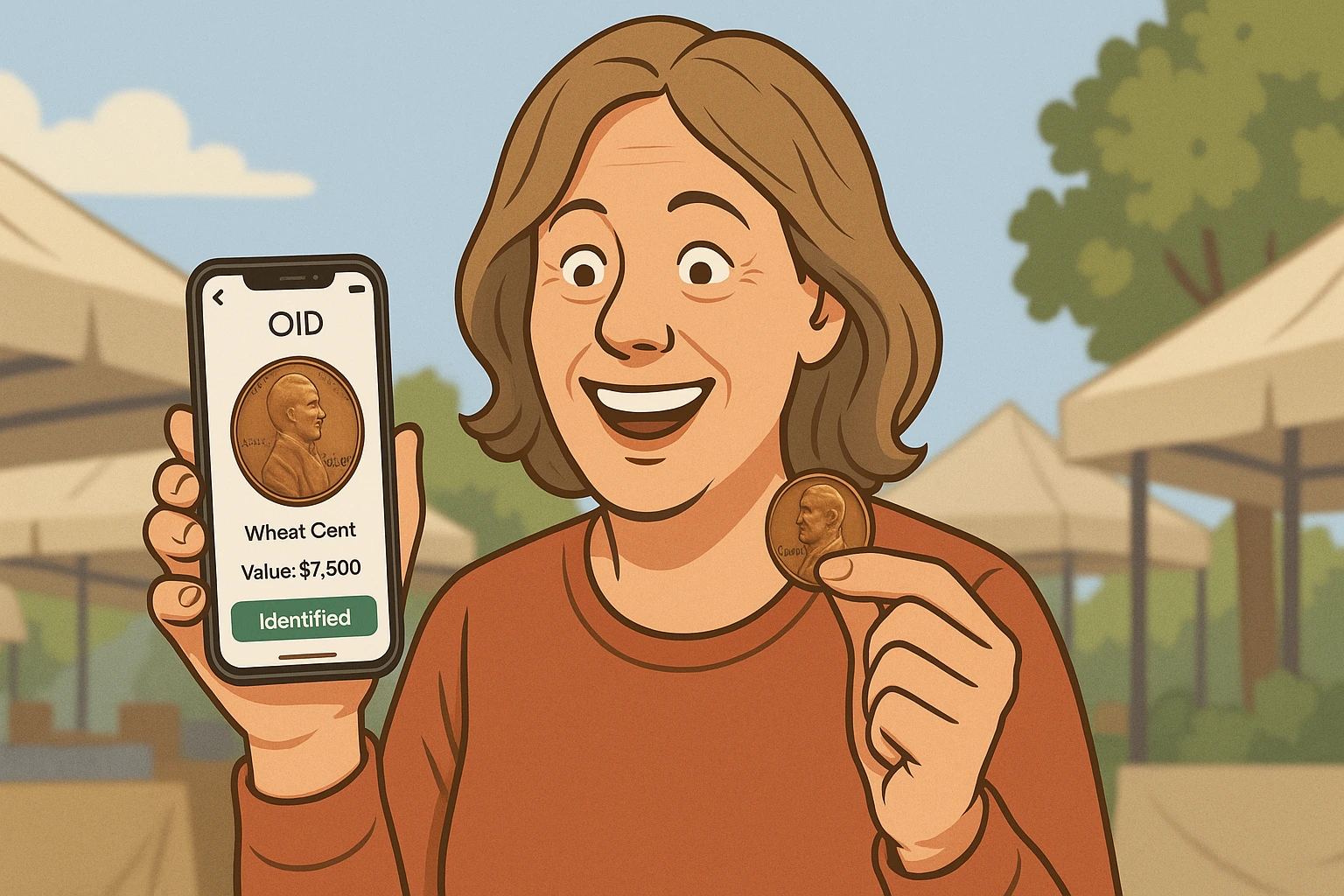Have you ever casually tossed a penny aside, thinking it’s worthless? That tiny copper (or zinc) disc might be hiding a secret—some have been auctioned for six figures or more.
What separates a penny that’s just pocket change from pennies worth money so large they fund a luxury vacation or even a down payment on a house? The answer lies in rarity, error, and condition. Let’s unravel why certain U.S. cents are turning heads in the world of collectibles.

Why Are Some Pennies Worth a Fortune?
While a regular penny may seem trivial, a rare one is a miniature artifact with a story. Several factors influence a coin’s value:
- Rarity and Mintage Numbers
Coins with lower mintage numbers are often scarcer. A penny that had just a few thousand produced—versus the billions made annually—immediately enters collector radar. - Minting Errors
These are the “happy accidents” of coin production. A misaligned die, wrong metal, or doubled design can turn a common coin into a collector’s dream. These errors often escape quality control unnoticed, making them rare and highly sought-after. - Condition (Grade)
Collectors assess coins based on wear, luster, strike quality, and preservation. Even minor blemishes can reduce value. Coins rated “Mint State” (MS) or higher by grading agencies command the top prices. - Historical Context
A coin minted during a significant historical period or under unique political conditions tends to carry greater value. It’s not just about metal—it’s about the story that metal tells.
The Most Expensive Pennies in History
Below is a table summarizing six legendary U.S. pennies that stunned the auction world. These are not just old coins—they’re masterpieces of history, mistakes, and scarcity:
| Penny | Year | Unique Feature | Auction Value |
| 1943-D Bronze Wheat Penny | 1943 | Only one known, mistakenly made from bronze | $1,700,000 – $2,300,000 |
| 1944-S Steel Wheat Penny | 1944 | Wrong metal; only a handful exist | $408,000 |
| 1909-S VDB Lincoln Cent | 1909 | Low mintage, rare initials on reverse | Up to $168,000 |
| 1955 Doubled Die Obverse | 1955 | Heavy doubling visible to the naked eye | $114,000+ |
| 1922 Plain Lincoln Cent | 1922 | No mintmark due to die wear error | Up to $92,000 |
| 1877 Indian Head Penny | 1877 | Extremely low mintage and historical context | ~$100,000 (great condition) |
Each of these coins exemplifies how simple changes—like switching metals or leaving off a mintmark—can create monumental value in the eyes of collectors.
A Penny from the Past, a Windfall for the Future?
Many of these high-value coins weren’t discovered by dealers but by ordinary people. That means the next big find could be sitting in your coin jar, desk drawer, or even in loose change from the store. Identifying them, however, requires more than luck. You need to know what to look for.
Finding a valuable penny doesn’t require a microscope or a collector’s diploma—just a sharp eye, basic knowledge, and a few helpful tools. While the pennies that made headlines tend to be once-in-a-lifetime finds, countless valuable cents still circulate or sit quietly in boxes across the country. Here’s how to separate the ordinary from the extraordinary.
Key Features That Boost a Penny’s Value
Before diving into any coin catalog or booking an appraisal, start by examining your penny using these core criteria:
1. Date and Mintmark Combo
The coin’s year and the small letter beneath the date (called a mintmark) offer your first clue.
- Look for Key Dates: Some years are far more valuable than others. For instance, the 1909-S VDB or 1922 “Plain” Lincoln cents are iconic in their rarity.
- Understand Mintmarks:
- S = San Francisco
- D = Denver
- No mark = Philadelphia (usually)
Coins from San Francisco or Denver mints often had lower mintages, making them more desirable.
2. Minting Errors
Not all errors are obvious, but some are striking—literally. Check for:
- Doubled Die: Text or numbers that appear doubled (1955 is the most famous example).
- Off-Center Strikes: When the coin’s image is misaligned, with a crescent of blank metal.
- Wrong Planchet: A penny made of steel when it should be bronze—or vice versa.
- Die Cracks or Cuds: Raised lines or blobs where the die was damaged.
These quirks turn flawed production into financial opportunity.
3. Metal Composition
The type of metal a penny is made from can also impact value—especially during years when compositions changed.
- In 1982, the U.S. switched from copper to zinc. A copper 1982-D Small Date penny is rare and potentially worth thousands.
- 1943 pennies were made from steel. But a bronze version from that year? It’s one of the most valuable coins in U.S. history.
Use a digital scale: copper pennies weigh about 3.11 grams, while zinc ones are 2.5 grams.
4. Preservation and Grade
Coin condition ranges from heavily circulated to “Mint State.” Even if your coin is rare, heavy wear can reduce its value significantly.
| Grade | Description | Collector Value |
| Poor (P-1) | Barely identifiable | Minimal |
| Fine (F-12) | Moderate wear, readable details | Moderate |
| Extremely Fine (EF-40) | Slight wear on high points | High |
| Mint State (MS-65+) | No wear, full luster | Top-tier |
Professional grading agencies like PCGS or NGC can certify your coin’s grade, which is critical for high-value sales.
Use Technology to Speed Up Identification
While traditional grading and coin catalogs still have their place, modern collectors are turning to tools that streamline the process. One standout is the Coin ID Scanner—a game-changer for beginners and experienced hobbyists alike.

Why Coin ID Scanner Stands Out:
- Photo Recognition: Just take a photo—Coin ID Scanner instantly analyzes and identifies the coin, checks for errors, and even estimates value.
- Accessible Anywhere: Whether you’re sorting through old family coins or traveling abroad, the app can help you spot hidden gems in real time.
It’s not just about identifying valuable pennies—it’s about learning their story, their rarity, and whether you’re holding history in the palm of your hand.
Coin ID Scanner: A Pocket-Sized Numismatist’s Toolkit
Let’s break down what makes this app more than just a digital reference tool:
1. AI-Powered Coin Recognition
The heart of the Coin ID Scanner lies in its advanced image analysis. Snap a photo of your penny, and within seconds the app will:
- Identify the coin’s type, year, and mintmark
- Estimate current market value based on condition and rarity
This makes the app ideal for spotting six-figure coins—especially for those who might not recognize a bronze 1943-D or a 1955 Doubled Die at first glance.
2. Global Coin Database at Your Fingertips
Coin ID Scanner connects you to a comprehensive database covering over 150,000 coin types from around the world. This isn’t limited to U.S. pennies—you can also:
- Cross-reference coins from foreign travels
- Track coins by composition, mint, or historic era
- Stay updated on high-value modern errors and newly discovered varieties
For travelers and global hobbyists, this means every coin you encounter has the potential to surprise you.
3. Digital Coin Collection Management
Forget the spreadsheets. The app lets you:
- Upload photos and tag each coin with notes
- Monitor estimated values as the market fluctuates
- Organize by category, country, year, or rarity
This is especially useful for people building or selling collections, enabling quick valuation and a cleaner inventory overview.
4. Real-Time Insights and Numismatic News
Coin ID Scanner doesn’t stop at identification—it also educates. Within the app, you’ll find:
- Daily articles from coin experts
- Auction results and price trends
- Tutorials on coin grading, spotting fakes, and preservation tips
It turns passive collectors into informed, active participants in a growing global market.
Why This Matters — For Collectors and the Curious
Whether you’re hunting through estate coins, browsing antique shops, or simply dumping out a childhood piggy bank, the next six-figure penny could be within reach. But finding it depends on awareness—and fast, accurate recognition. That’s exactly what Coin ID Scanner provides.
For numismatists, it means more confident purchases, faster cataloging, and better protection of your investments. For casual users and travelers, it offers instant translation of “just another coin” into “hidden historical treasure.”
There’s a reason stories of rare pennies selling for hundreds of thousands of dollars keep resurfacing—they’re real. These coins are out there, quietly blending in with billions of common cents. But the days of needing a magnifying glass and a pile of dusty reference books are over.
Today, all it takes is a clear photo and the right app.
So next time you find a penny—at the bottom of a bag, in an old drawer, or even in your change—don’t ignore it. Open Coin ID Scanner, take a picture, and let the technology reveal what your eyes might miss. That one cent might just be worth six figures.




